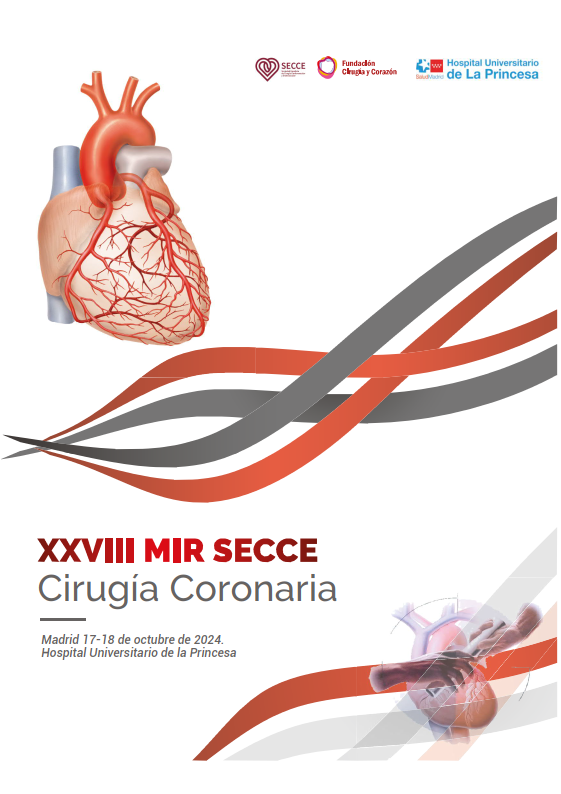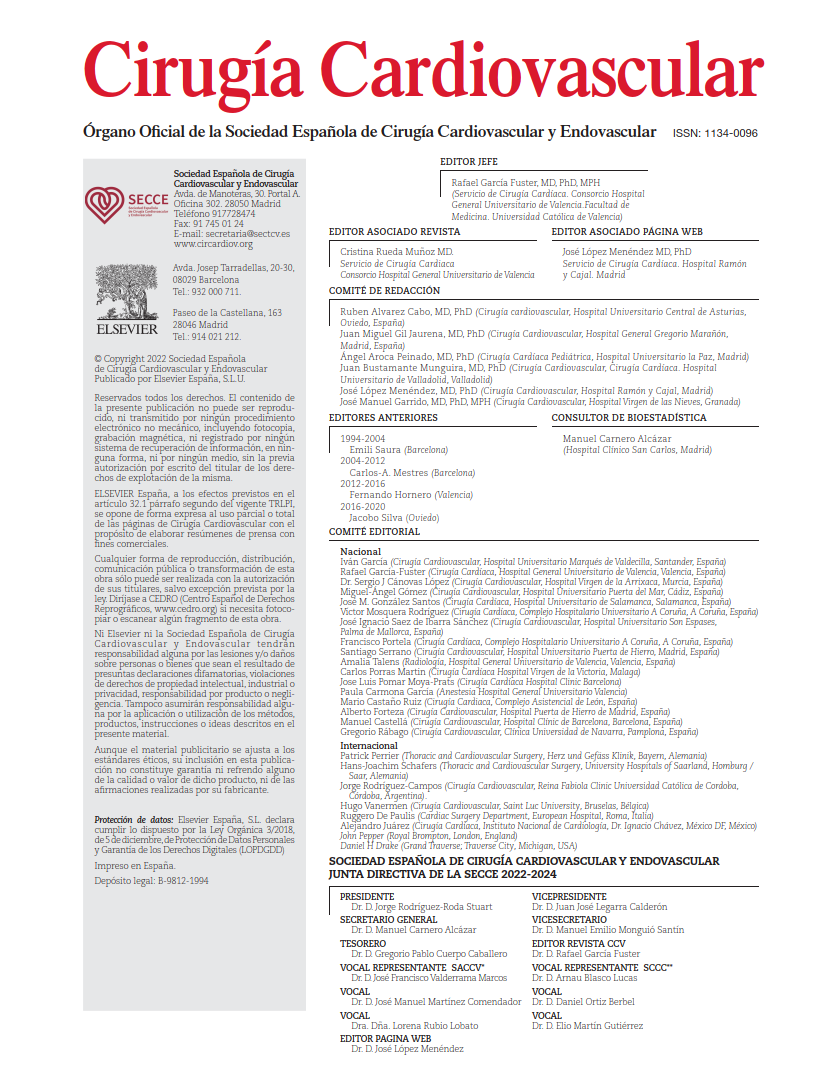Mitral annular calcification (MAC) has posed, and continues to represent, a significant surgical challenge. The conventional treatment involving annular calcium debridement followed by valve replacement with prostheses sutured to the annulus or left atrium has been widely utilized. Additionally, more complex techniques, such as mitral-aortic reconstruction (Commando procedure) in cases of extensive anterior annular calcification, have provided alternative options, although with generally limited outcomes. However, in highly specialized centers, these interventions have demonstrated promising results, as we have analyzed on multiple occasions in our blog.
The development of percutaneous prostheses has revolutionized the management of various valvular pathologies, especially aortic valve disease, achieving results that would have seemed unattainable two decades ago. However, when it comes to the mitral position, the implantation of these percutaneous prostheses still faces significant challenges. Among them, the high risk of left ventricular outflow tract (LVOT) obstruction and the persistence of paravalvular leakage rates, which remain far from acceptable, stand out.
In this context, the combination of surgical techniques and advanced percutaneous technology has given rise, over the last decade, to a novel strategy: the surgical implantation of percutaneous prostheses via cardiopulmonary bypass through the left atrium. This procedure, known as transatrial transcatheter mitral valve replacement (TA-TMVR), has been increasingly utilized, simplifying surgery in high-risk patients with MAC and offering a promising alternative in scenarios of high surgical complexity.
This study evaluated the trends in the utilization of TA-TMVR and the outcomes achieved in the U.S. population. Patients included in the Society of Thoracic Surgeons database between 2014 and 2021 who underwent TA-TMVR for MAC were analyzed. Exclusion criteria included hypertrophic cardiomyopathy, congenital mitral valve disease, ventricular assist device placement, or prior mitral valve surgery. The primary outcomes assessed were operative mortality and major adverse cardiac events (MACE), comparing the early period (2014–2017) with the recent period (2018–2021).
A total of 222 cases from 104 U.S. hospitals were identified. The annual volume increased from 6 cases in 2014 to 43 in 2021. Operative mortality and MACE occurred in 10.4% and 22.5% of patients, respectively. Compared to the early period, patients in the recent period exhibited a higher proportion of elective procedures (79.5% vs. 64.8%) and sternotomy approaches (90.1% vs. 80.3%, both p < .05). Despite similar predicted mortality risks (9.6% vs. 11.0%), patients in the recent period demonstrated lower rates of operative mortality (3.3% vs. 25.4%, p < .001) and MACE (18.5% vs. 31.0%, p = .057). Univariate and multivariate analyses confirmed that the recent period was significantly associated with reduced mortality (p < .001) and adverse events (p = .032).
In conclusion, mortality and adverse events following TA-TMVR have significantly decreased in recent years, regardless of changes in patient characteristics or surgical techniques. TA-TMVR is emerging as a safe and effective option for selected patients with MAC.
COMMENTARY:
With a sample of 222 patients, this study represents the largest published series to date on the outcomes and trends of TA-TMVR in patients with severe MAC in the United States, surpassing previous research by a significant margin. Its findings reflect a paradigm shift in the treatment of this condition, making it a highly relevant and impactful investigation for cardiovascular surgery. Furthermore, it provides an accurate insight into the application of this technique in an advanced clinical setting, enabling extrapolation of its conclusions to similar contexts.
The most significant results of this study reveal a remarkable advancement in TA-TMVR. First, there is a drastic reduction in operative mortality, which decreased from 25.4% in the early period (2014–2017) to 3.3% in the recent period (2018–2021). This substantial improvement reflects the progress in the safety and efficacy of the procedure. Additionally, the study demonstrates a clear association between the recent period and a lower incidence of major adverse cardiac events, with the risk nearly halved (adjusted OR: 0.48). Finally, the sustained increase in the annual case volume indicates growing acceptance and confidence in this technique within clinical practice.
To contextualize these findings, it is essential to cite the most relevant and recent studies on TA-TMVR to date, such as the work by Smith RL et al. and the multicenter study by Brener MI et al., both previously analyzed in this blog. These studies, like the present one, documented a significant reduction in mortality in transatrial procedures. The 30-day and one-year mortality rates reported in these investigations align with the outcomes observed in this analysis, reinforcing the reproducibility of these results. However, the STS study stands out for showing even lower mortality rates during the second period (2018–2021), demonstrating continued improvements in the technique and its outcomes.
While this study represents a significant advancement due to its sample size, prior research offers a greater level of technical detail, especially regarding surgical techniques and preoperative planning. For instance, earlier studies have emphasized the importance of septal myectomy and anterior mitral leaflet resection to prevent LVOT obstruction, as well as the use of advanced imaging, such as 4D computed tomography, to optimize outcomes.
The use of balloon-expandable prostheses is emerging as a promising option in the treatment of MAC, as demonstrated in this study, with an exponential increase in its utilization and a gradual improvement in outcomes over recent years. This advancement represents a paradigm shift in the management of this condition. So much so that recent reviews, such as the one by Guerrero et al., propose algorithms recommending TA-TMVR in cases of severe MAC with significant calcium thickening (>10 mm) and circumferential involvement >270° (score ≥7).
Before TA-TMVR becomes a routine procedure in hospitals, it is crucial to move towards greater standardization of the technique and optimization of outcomes. Nevertheless, it can already be affirmed that this procedure is positioned as an indispensable tool in highly specialized centers, with exceptional potential for integration with other cardiovascular interventions in the management of complex MAC cases.
REFERENCES:
Awtry JA, Shi WY, McGurk S, Louis C, Ailawadi G, George I, et al. National trends in utilization of transatrial transcatheter mitral valve replacement and postoperative outcomes. J Thorac Cardiovasc Surg. 2024 Dec;168(6):1656-1665.e4. doi: 10.1016/j.jtcvs.2023.10.010. Epub 2023 Oct 13. PMID: 37839658.
Guerrero ME, et al. Diagnosis, classification, and management strategies for mitral annular calcification. JACC Cardiovasc Interv. 2023;16(18):2195-2210.



